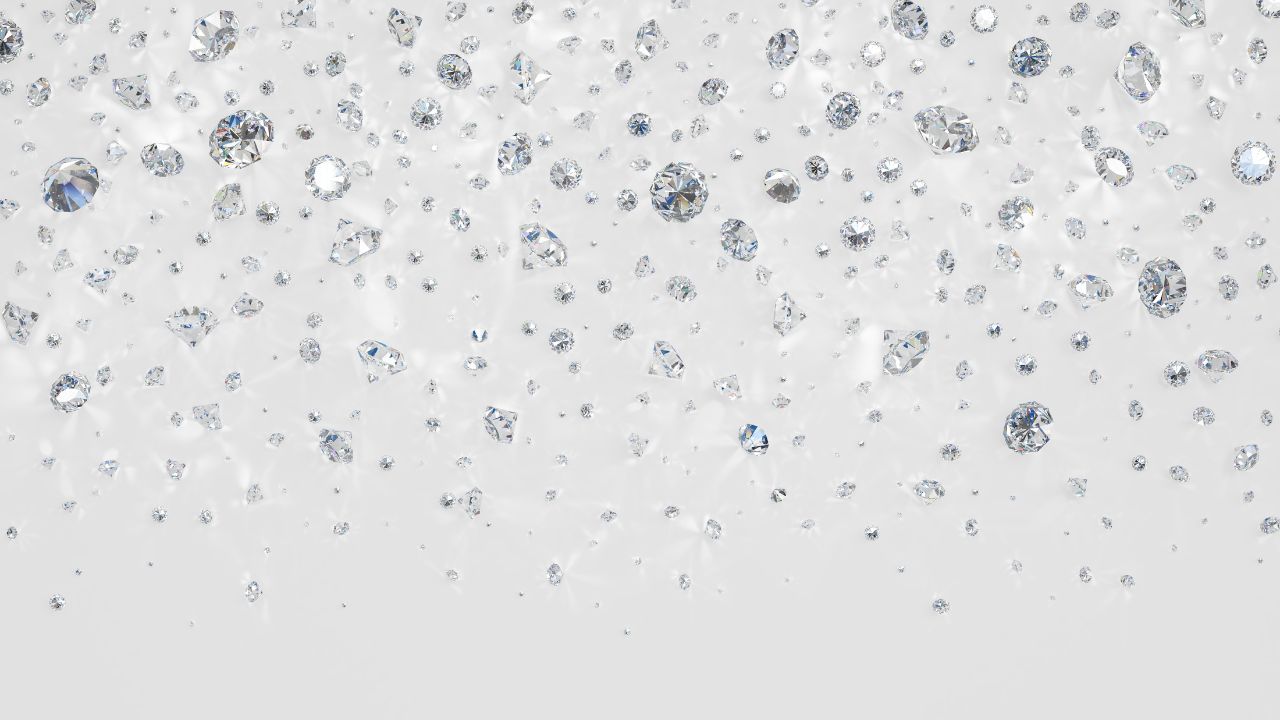Moissanite has taken the jewellery world by storm, offering remarkable brilliance and ethical sourcing at a fraction of the cost of traditional diamonds. Despite its growing popularity, there are still plenty of myths and misconceptions swirling around this stunning gemstone. In this blog, we’ll separate fact from fiction, helping you make an informed choice for your next jewellery purchase.
1. Myth #1: Moissanite Is Just a “Fake Diamond”
Fact: Moissanite Is a Unique Gemstone
- Distinct Composition: Moissanite is composed of silicon carbide, unlike diamonds, which are pure carbon.
- Higher Fire: Moissanite often exhibits more colorful flashes (“fire”) than diamonds, making it stand out on its own merits.
- Genuine Beauty: While it’s a popular diamond alternative, moissanite isn’t an imitation—it’s a gemstone in its own right.
What Is Moissanite? A Complete Guide
2. Myth #2: Moissanite Loses Its Sparkle Over Time
Fact: Proper Care Ensures Lasting Brilliance
- High Durability: With a Mohs hardness of 9.25, moissanite resists scratches and maintains its surface luster.
- Easy Maintenance: Regular cleaning with mild soap and water keeps your stone gleaming.
- Long-Term Radiance: Unlike some simulants, moissanite doesn’t “cloud” or dull as it ages.
(See our “moissanite vs diamond” blog for detailed cleaning info.)
3. Myth #3: Moissanite Is Not as Hard as Diamond
Fact: Moissanite Is Extremely Tough
- Mohs Scale Ranking: At 9.25, moissanite is just behind diamond’s 10, making it one of the hardest gemstones available.
- Everyday Wear: Moissanite can handle the rigors of daily life, including rings and bracelets worn regularly.
- Lasting Investment: Its hardness and durability make moissanite suitable for engagement rings and heirloom pieces.
4. Myth #4: Moissanite Is the Same as Cubic Zirconia (CZ)
Fact: They Have Different Compositions and Properties
- Silicon Carbide vs. Zirconium Dioxide: Moissanite and CZ are chemically distinct, with moissanite boasting a higher refractive index.
- Brilliance & Fire: Moissanite’s sparkle is often more intense and longer-lasting than CZ’s.
- Price Difference: Moissanite typically costs more than CZ due to its superior optical properties and durability.
5. Myth #5: Moissanite Isn’t Valuable
Fact: Value Depends on Quality, Rarity, and Demand
- Affordability vs. Value: Moissanite is more affordable than diamonds, but it still holds value due to its beauty and durability.
- Growing Popularity: Demand for ethical and cost-effective gems has boosted moissanite’s reputation and desirability.
- Resale & Sentimental Value: While diamonds may have higher resale margins, moissanite remains a beloved choice for many who value brilliance and ethics over resale alone.
6. Myth #6: Moissanite Looks “Too Rainbow” or “Fake”
Fact: Sparkle Is Subjective
- Rainbow Fire: Moissanite’s high dispersion can produce colorful flashes under direct light, which some adore for its unique vibrancy.
- Lighting Matters: In natural or soft indoor lighting, moissanite appears very similar to a near-colorless diamond.
- Personal Preference: If you love extra sparkle, moissanite is ideal. If you prefer a more subtle shine, a lower-dispersion gemstone may be your style.
Conclusion
From being labeled a “fake diamond” to misconceptions about losing its sparkle, moissanite has faced its fair share of myths. The truth is, moissanite offers stunning brilliance, exceptional durability, and an ethical, budget-friendly alternative to traditional diamonds—making it a top choice for modern consumers. By debunking these myths, we hope you feel confident exploring moissanite’s dazzling potential for your next ring, pendant, or pair of earrings.




